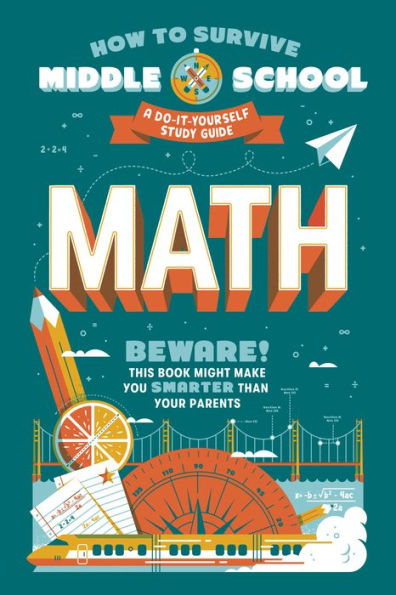Table of Contents
Introduction: Math and the Real World 1
1 Mathematics Helps Us Make Sense of the World 2
2 How to Think Like a Mathematician 5
3 A Mathematician's Tools 8
4 Equipment for Learning 10
Chapter 1 Ratio Relationships: Part 1 13
1 Ratio Basics 14
2 Ratios vs. Rates 23
2 Putting Rates and Ratios to Work 33
Chapter 2 Ratio Relationships: Part 1 53
1 Properties of Proportionality 54
2 The Constant of Proportionality 55
3 Simple Interest 74
Chapter 3 Operations and Rational Numbers: Part 1 85
1 Division: Going Beyond Whole Numbers 86
2 Dividing a Fraction by a Fraction 90
3 Operations with Decimals 98
4 Terminating and Repeating Decimals 103
5 Greatest Common Factor of Whole Numbers 100 or Less 105
6 Least Common Multiples of Whole Numbers 12 or Less 111
Chapter 4 Operations and Rational Numbers: Part 2 121
1 Positive and Negative Integers 122
2 Absolute Value 129
3 Positive and Negative Numbers on the Coordinate Plans 135
Chapter 5 Operations and Rational Numbers: Part 3 151
1 Adding and Subtracting Rational Numbers 152
2 Multiplying and Dividing Rational Numbers 163
3 Simplifying with Order of Operations 174
Chapter 6 Expressions and Equations: Part 1 183
1 Exponents 184
2 Writing Algebraic Expressions 192
3 Expressions: Algebraic Language 197
Chapter 7 Expressions and Equations: Part 2 207
1 Writing and Interpreting One-Step Equations 208
2 Solving One-Step Equations 212
3 Solving Two-Step Equations 221
4 Understanding and Solving Inequalities 227
Chapter 8 Expressions and Equations: Part 3 241
1 Professional Relationships 242
2 Linear Relationships 249
3 Solving and Graphing Systems of Linear Equations 256
4 Solutions to Systems of Linear Equations Types 265
5 Defining and Identifying Functions 270
Chapter 9 Area, Volume, and Surface Area 283
1 Area 284
2 Polygons in the Coordinate Plane 300
3 Volume 305
4 Surface Area of Right Rectangular Prisms 312
Chapter 10 Cross Sections, Circles, Volume, and Angles 323
1 Cross Sections of Solids 324
2 Circles: Finding Circumference and Area 328
3 Problem Solving: Standard Shapes 334
4 Volume: Cylinders, Cones, and Spheres 336
5 Angles 340
Chapter 11 Similarity, Congruence, and Angle Relationships 353
1 Scale Factor, Sides, and Area 354
2 Congruence 359
3 Angle Relationships 369
4 The Pythagorean Theorem 376
Chapter 12 Statistics 397
1 Statistical Variability 398
2 Random Sampling 402
3 Using Data to make Inference and Generalizations about a Population 408
4 More Data Displays 415
5 Comparing Populations 437
Chapter 13 Probability 453
1 Probability 454
2 Theoretical vs. Experimental Probability 459
3 Probability of Compounds Events 467
Chapter 14 Bivariate Data 491
1 Constructing, Examining, and Interpreting Scatterplots 492
2 Line of Best Fit 505
3 Two-Way Frequency Tables 510



